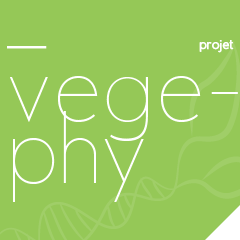VEGEPHY
Development of an oil for the treatment of seed potatoes to fight against transmission by the aphid of the virus Y and of an adjuvant for a phytosanitory product with improved adherence properties thanks to the addition of polysaccharides which give these treatments better targeting
Description
The phyto-pharmaceutical compounds and the oils are used to fight diseases in many crops to eradicate insects that are responsible of the transmission of virus diseases that are detrimental to the development and quality of the harvests of the crops. Now insecticides and mineral oils are sprayed in high to very high doses on crops to avoid the development of these diseases. The project consists in understanding (i) the mechanisms of action of the oils and their capacity to inhibit this vector of virus and (ii) the reaction of the plants towards these insects and these oils in order to make a better formulation. The vegetable basis (oils and esters) more compatible with the evolution of the fossil resources market and the pressures for human and environment protection – elimination of mineral oils and pesticides – are the chosen orientations after the first trials and are the investigation lines for the preparation of a formulation. This first step aims to elaborate an efficient composition for this treatment that can answer to the market demands. The second step consists in studying the quality of the spraying in order to maximise the transfer of the active ingredient into the plant. The quality of application is studied through the rheology and the properties of the superficial tensions of the oil emulsions during the spraying (size of the particles) in order to identify the factors that influence the drift; it means limiting the thin particles lost in the atmosphere and the heaviest particles that fall down the soil. Indeed the reduction of these 2 factors maximises the quantity of active product in the plant and consequently it brings better global efficiency. Moreover, the interfacial properties are studied with the phenomenon of wetting, adherence or rebound of the particles and penetration of the substrates, in order to create the best conditions for the reaction of the active ingredient that has reached its objective and to ensure maximum efficiency of the treatment. This study is completed by the study of the residues of the active ingredient in the plant that could be the consequence of the use of adjuvants that are maximisers of efficiency. The maximum residues level (MRL) established by the law imposes us to verify at each level of treatment the factors that influence the evolution of the concentrations of the active ingredients that can remain in the final product, integrating at the same time more efficiency of the active ingredient, a better transfer, more adherence and penetration that brings a better efficiency of the treatment and also consequently a reduction of the quantities of the active ingredients used. Validation in the field with biological trials at each step of selection will allow for finding the compounds of the formulation. All these factors are major for the formulation of an oil to protect the plant against the virus diseases and also for its mean of transfer to reach the crop to treat. Study in real conditions of the new technical itineraries in order to optimise the treatment in their concentration and dose to apply.
Technological Development Envisaged
According to Rohrbach (1988), mineral oils have been used since 1930 in order to reduce the cochineal insect populations with a slight decrease of the virus transmission in pineapple plants. Today these mineral oils are used in the seed potato culture and also in lower quantities in fruit trees. Their commercial development is however limited due to the very high efficiency of the insecticides of synthesis. The vegetable oils have toxic properties against acaroids and make an opposition to the inoculation of non-persistent virus by the aphid on pear trees – reduction of 40% of the virus – (Martin et al. 2006) and on seed potatoes, but are often associated with insecticides. P. Giordanengo showed the absence of insecticide action of the oils on the aphids (Ameline et al. 2006, Martoub et al. 2008). The action of the mineral or vegetable oils that lead to the reduction of the virus diseases is still unknown; recent studies show a preventive effect and the induction of an early defence answer of the plant. The intervention of lipids in the defence mechanisms (Molina et al 1993; Guerdoni et al 2002) suggests an elicitor role that is at the origin of the systemic answer of the plant.
Partenaires
UTC – Universite Technologique de Compiegne / Integrated Transformations of Renewable Matter
Unité de recherche «Ecologie et Dynamique des Systèmes Anthropisés» (Edysan FRE 3498)

